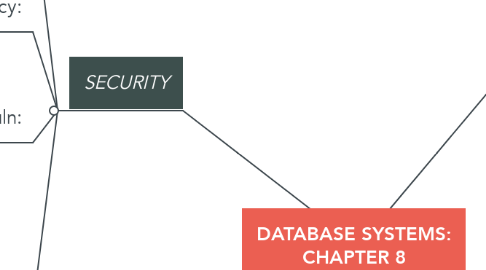
1. DATA
1.1. Dirty data: data that suffer from inaccuracies and inconsistencies
1.2. Data quality: ensuring accuracy, validity, and timeliness of data
1.3. Data profiling software: determine data patterns and compare them against standards defined by the organization
1.4. Master data management software: helps prevent dirty data by coordinating across multiple systems
2. ROLE OF DATABASES IN ORG
2.1. At top level: - enable strategic decision making and planning - identify growth opportunities - define and enforce organizational policies - reduce costs and boost productivity - provide feedback
2.2. At middle level: - deliver the data required for tactical planning - monitor the use of resources - evaluate performance - enforce security and privacy of data in the database
2.3. At operational level: - represent and support company operations - produce query results within specified performance levels - enhance the company’s short-term operations
3. SECURITY
3.1. Security Goals:
3.1.1. - confidentiality: protecting data against unauthorized access - compliance: activities that meet data privacy and security reporting guidelines - integrity: keeping data consistent and free of errors or anomalies - availability: accessibility of data whenever required by authorized users and for authorized purposes
3.2. Security Policy:
3.2.1. - collection of standards, policies, and procedures created to guarantee security - security audit process
3.3. Security Vuln:
3.3.1. - weakness in a system component that could allow unauthorized access or cause service disruptions - security breach: occurs when a security threat is exploited and could lead to a database whose integrity is preserved or corrupted
3.4. Database Security:
3.4.1. Definition: DBMS features and related measures that comply with the security requirements
3.4.2. Authorization management: Procedures to protect database security and integrity
3.4.2.1. Examples: - user access management - view definition - DBMS access control - DBMS usage monitoring
4. DATA DICTIONARY
4.1. Function of data dictionary: Store description of all objects that interact with the database
4.2. Types of data dictionary:
4.2.1. i) integrated - included with the DBMS ii) standalone - third-party systems
